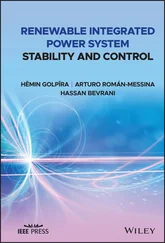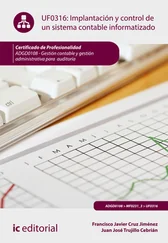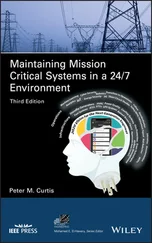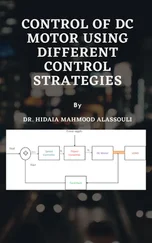Traditionally, Regulatory Agencies themselves have provided limited insight and assistance into how organizations operating within the pharmaceutical industry can comply with the regulations. However, over time, regulatory guidances and other instruments have arisen and evolved and today consist of a fairly large body of knowledge, which can be used by organizations to aid in compliance with the CGMPs.
When it comes to regulatory guidance for Quality Control (QC) Laboratories, the following documents may be helpful:
US FDA Compliance Programs to FDA staff, Chapter 56: Drug Quality Assurance 7366.002 Drug Manufacturing Inspections
US FDA Guidance for Industry, Quality Systems Approach to Pharmaceutical CGMP Regulations
ICH Harmonised Tripartite Guideline, Q1A to Q1F Stability
ICH Harmonised Tripartite Guideline, Q2 Analytical Validation
ICH Harmonised Tripartite Guideline, Q3A to Q3D Impurities
ICH Harmonised Tripartite Guideline, Q4 to Q4B Pharmacopoeias
ICH Harmonised Tripartite Guideline, Q6A to Q6B Specifications
ICH Harmonised Tripartite Guideline, Q7 Good Manufacturing Practice Guide for Active Pharmaceutical Ingredients
ICH Harmonised Tripartite Guideline, Q8 Pharmaceutical Development
ICH Harmonised Tripartite Guideline, Q9 Quality Risk Management
ICH Harmonised Tripartite Guideline, Q10 Pharmaceutical Quality System
ICH Harmonised Tripartite Guideline, Q12 Lifecycle Management
ICH Harmonised Tripartite Guideline, Q14 Analytical Procedure Development
WHO Annex 2: Good Manufacturing Practices for Pharmaceutical Products: Main Principles
FDA Guidance for Industry Quality Systems Approach to Pharmaceutical CGMP Regulations, September 2006
It should be noted that although not legally binding, violation of the principals of ICH Harmonised Tripartite Guideline, Good Manufacturing Practice Guide for Active Pharmaceutical Ingredients, Q7, are sometimes documented as findings by FDA.
Additional FDA and ICH guidelines exist and can be located at: https://www.fda.gov/drugs/guidances-drugs/all-guidances-drugs, https://www.ich.org/products/guidelines/quality/article/quality-guidelines.html, and https://www.fda.gov/drugs/guidance-compliance-regulatory-information/drug-compliance-programs
The remainder of “Laboratory Control System Operations in a GMP Environment” is dedicated to describing the critical functions of the LCS sub elements so the reader understands what is expected from the FDA and the Global Regulatory Agencies listed earlier. In addition, each chapter will present or link to tools, templates, checklists, and some of the Global Regulatory Agencies' guidance listed previously.
It should be noted that text is written for a broad audience. It is applicable to both Quality Control and Quality Assurance professionals in small, medium, and large companies within the pharmaceutical and biopharmaceutical industries. R&D personnel working in non-GMP environments will also benefit applying the organizational schemes and principals presented in this text. 1 Also, foreign firms in China and India will find this book especially useful.
This book is particularly helpful for personnel who work in smaller companies because they often do not have the financial, personnel resources, and existing “corporate knowledge” that a large US- and European-based company may have and are therefore often left to “figure it out” on their own. In this respect the guide is particularly valuable in the example-templates and checklists it includes.
As the reader progresses through this text, they will notice that some topics, notes, and clarifications are addressed more than once and in different locations within the book. This was done by the author on purpose to ensure that important topics are addressed appropriately and reinforced.
Additionally, the QC laboratory is a very complex and dynamic entity, which continually grows and evolves over time. This means that the 10 sub elements into with the LCS is divided (which is purely a matter of choice on the part of the author) can be reduced, modified, or expanded to address changes within the organization and the evolution of Regulatory Agency expectations and standard industry practices. This is why there is a “C” in CGMP: C means current, which is today, not yesterday.
The following are provided in electronic format in the Chapter 1Appendix ( www.wiley.com/go/Bliesner/LabControl_GMPEnvironment):
21 Code of Federal Regulations Parts 210 and 211 – Current Good Manufacturing Practice Regulations, Revised as of April 1, 2005
US FDA Compliance Programs to FDA staff, Chapter 56: Drug Quality Assurance 7366.002 Drug Manufacturing Inspections, October 31, 2017.
US FDA Guidance for Industry, Quality Systems Approach to Pharmaceutical CGMP Regulations, September 2006.
1 1 21 CFR Parts 210 and 211 Current Good Manufacturing Practice for Finished Pharmaceuticals.
2 2 US FDA (2017). Compliance Programs to FDA staff, Chapter 56: Drug Quality Assurance 7356.002 Drug Manufacturing Inspections.
1 1In June 2018 the ICH Assembly endorsed ICH Q14 “Analytical Procedure Development Guideline” and thus, by default, requiring a level of compliance with the GMPs by R&D laboratories.
2 Components of the Laboratory Managerial and Administrative Systems Sub Element (MS)
Description of the Laboratory Managerial and Administrative Systems Sub Element
The Laboratory Managerial and Administrative Systems are those sub elements that provide the infrastructure for efficient and compliant operations of an analytical laboratory. It is sometimes difficult to directly relate items within this sub element to the Current Good Manufacturing Practices (CGMPs). However, deficiencies within this sub element, which cannot be directly attributed to the CGMPs, can lead to compliance failures. For example, 21 CFR Sections 210 and 211 do not specifically require that someone be assigned the duties of training manager. However, failing to have an individual responsible for training and consequently not having an effective training program can degrade the overall quality of data that is generated by laboratory personnel, and US Food and Drug Administration (US FDA) has cited companies for not having a training program for laboratory personnel [1].
The Laboratory Managerial and Administrative Systems sub element includes at least six individual topics. A laboratory that is in compliance with CGMPs should at least address each of these topics (as applicable). These topics include (i) Organizational Structure and Roles and Responsibilities, (ii) Training and Qualification, (iii) Laboratory Budgeting, Purchasing, and Requisition, (iv) Laboratory Administration and Operations, (v) Laboratory Chemicals, Solutions, Reagents and Supplies, and (vi) Laboratory Reference Standards and Solutions.
These six topics are listed within the text of the chapter along with some suggestions on what items should be addressed in each topic. The list of items under each topic is fairly comprehensive but may not be totally inclusive of all those components, which may constitute the sub element.
Contents of the Sub Element
The six topics mentioned earlier are presented in Table 2.1in the form of questions related to each topic. For each topic, additional details, or “points to consider,” are offered along with notes and clarifications as appropriate. The questions, notes, and clarifications are all based on actual inspectional findings from Regulatory Inspectors or points that have been found to directly or indirectly impact compliant and efficient real-world Laboratory Control System operations.
Читать дальше












